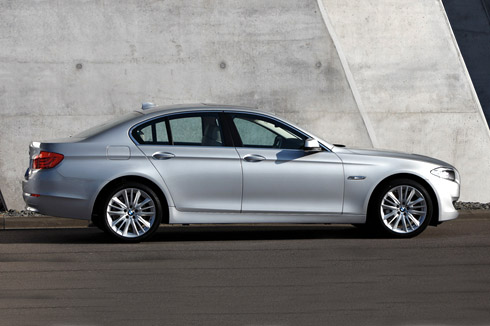|
|---|
|
|---|
Tuesday, April 20, 2010
Indigo CS e-series launched by Tata
Sunday, April 18, 2010
Tata to launch Aria in the near future!
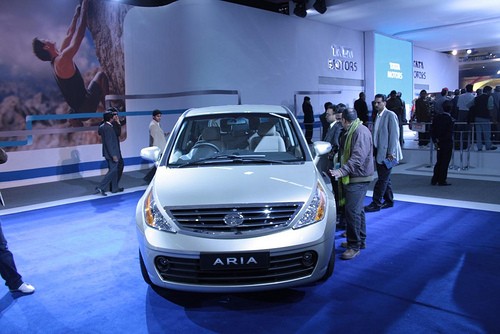
Mahindra and Renault split, Logan to be continued in India!
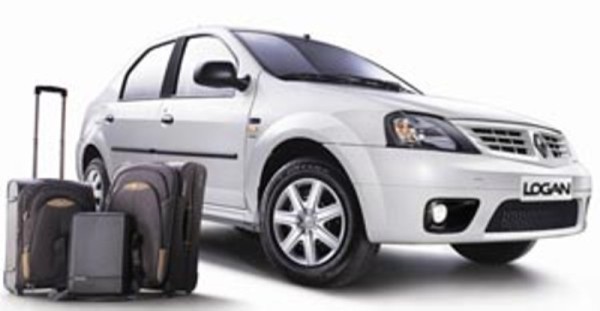
Tata’s Nano-Indica straddler codenamed Dolphin
According to various sources, the car will hit the streets within the next 18-24 months. Since the phasing off of the legendary Maruti 800, it is now evident that Tata is very keen into getting a firm foothold in the small car segment. Stay tuned as we try our best to get more information about this upcoming small car.
2010 Wagon R details revealed!
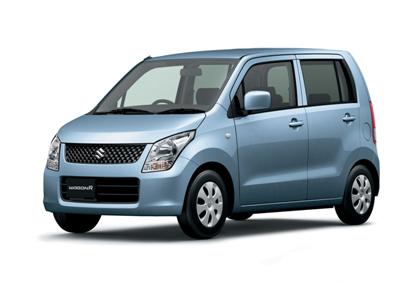
This is just a representative image - the actual car may look different
- Bold and Aggressive Design
- V-character line
- Bigger and sweeping lamp with blue tint
- Wider bumpers that stretch to the corners
- Sloping character (roof)
- Flared fenders
- Bigger and wider wheels
- Upright character in rear
- Ease in ingress and Egress (Larger doors)
- Chrome accentuation in Front and Rear (WagonR brand engraved in chrome in rear)
- Improved rear visibility.
- Dual tone interiors
- New IP, Silver accentuation all around
- 3-D seat fabric
- New Steering wheel
- Tilt steering
- Integrated audio with AUX-in and 6-band graphic equalizer.
- New ergonomic gear knob
- New Speedometer design
- Full-trim interiors including A, B and C pillar trims.
- Best in class wheel base (2400mm, +40 mm more than wagonR)
- Huge leg-space. Best in segment tandem distance (100 mm more than previous WagonR)
- Best in class front seat travel (240mm, 33% more than WagonR) - helps tall users
- Best in segment front and rear headroom
- Push type cup holders, utility hook
- Sturdy and deeper glove box with integrated shelf.
- Utility basket under co-driver seat (environment care)
- Front door map pocket
- Soft insert on the floor console(to safeguard the cell-phone camera unit)
- 60:40 split rear seats
- Co-driver side seat back-pocket
- Rear parcel tray
- Integrated tool box
- Tilt steering
- Electrical Outside Rear View Mirrors (ORVM)
- Front & Rear power windows
- Keyless entry
- Foldable assist-grips
- K-series engine
- Cable type transmission
- A power of 68 PS
- A high torque of 90Nm.
- New frame type suspension
- Better NVH
- Ride and comfort
- Stability
- New HVAC unit
- Fuel Efficiency of 18.9 kmpl
- ABS & dual Airbag
- Rear Defogger, wiper & washer
- Driver seat belt indicator
- Security system, i-CATS
BMW 5 series will hit the streets on 30th April
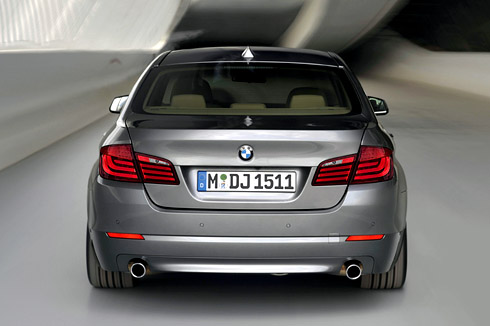
Monday, April 12, 2010
Refreshed Wagon R by the end of April!
Sunday, April 11, 2010
Suzuki Kizashi to be imported by Maruti as CBU
M&M joins the price rise trend!
Thursday, April 8, 2010
New Mercedes E-Class Coupe launched!
“The E-Class Coupé makes an unambiguous statement about a lifestyle characterized by beauty and sophistication. With its expressive styling, premium equipment, state-of-the-art technology and high safety standards, the New E- Coupé meets the needs of young individuals looking for a car that is athletic, striking and passionate. The vehicle rounds off the automotive product range and targets a clientele for whom style and individuality is of significant importance,” said Dr. Wilfried Aulber, CEO, Mercedes Benz India.
The car features a few state of the art features like the ATTENTION ASSIST (drowsiness detection system), selective damper control, preventive occupant protection Adaptive Main Beam Assist, PRE-SAFE® technology and Intelligent Lighting System which makes the car feel more or less alive. The car has the ability to react in cases of danger and probable accidents in an independent manner. With various mind boggling features, the car is positioned as one of the top most in the Mercedes Benz Luxury class.
Wednesday, April 7, 2010
All new Hyundai i20 launched, Prices revealed!
by Motoroids
Honda to launch small car earlier than decided!
Best first quarter sales record by Audi India
Tuesday, April 6, 2010
New Skoda Superb variant launched!
Maruti Suzuki hikes prices with immediate effect!
VW Polo bags the 2010 World Car of the Year award!
VW launches Passat TSI and Jetta 2.0L TDI in India
Maruti Suzuki sells more than a million units in 2009-10!
Monday, April 5, 2010
All Variants of Maruti Swift
Sunday, April 4, 2010
The Monte Carlo, the Epitome of the 70’s Personal Luxury Car.

Though it started into the luxo-personal car market late in the game, the Monte Carlo went on to become one of the most popular and best selling marques in GM history. With the cars sales success, NASCAR racing history and overwhelmingly popular SS series, the Monte Carlo solidified its place in the personal car market.
General Motors was no newcomer to the personal luxury market, with both strong entries in the market via the Buick Rivera and Pontiac Grand Prix in the early 60’s. While the Rivera (and later Olds’s Tornado and Cadillac’s Eldorado) focused on a definitely more upmarket clientele, Pontiac’s very successful (and affordable) GP was garnering a larger market share, and taking a bite out of Chevy sales, raising eyebrows and concern from its bigger sister division.
By 1965, Chevy had a strong lineup,but was struggling to get its answer to the Ford Mustang pony car, the Camaro, out of development/testing and to market. Chevy was in an uncomfortable spot, with no direct competing car to the Mustang, or to Fords increasingly luxurious (and profitable) Thunderbird or Pontiac’s luxury/sporty Grand Prix. Elliot “Pete” Estes, then general manager of Chevrolet, proposed a personal car of the divisions own.
A personal luxury car for Chevy was no revelation, and not a new idea. Since the late 50’s Chevy dealers were clamoring for a Thunderbird rival of their own, they were bemoaning easy and profitable Thunderbird sales Ford dealers were racking up, watching customers walk out their door to neighboring Ford dealers with no car to fight them. By the time sister divisions Buick and Pontiac (when the Rivera and GP came to market in the early 60’s) introduced their own personal luxury cars, Chevy dealers were demanding that Chevy develop an answer to the Thunderbird too. With strong sales of the larger Impala Sport coupe and Malibu/Chevelle custom as an example, it was hard to ignore the appeal and the sales potential for such personal car.
Pete Estes & John Z. DeLorean
But Chevrolet division sales manager, Lee Mays, was not in agreement. Truth be told, Chevrolet had an abundance of up to 12 different car models at the time, and to his mind, it was a chore to develop distinctive & successful sales strategies for them all in the shrinking market-share environment of the mid 60’s. Blind to the market potential, Mays failed to see the niche for a personal luxury car for Chevy. Mays, a powerful presence in GM and Chevy, successfully nixed many attempts to bring a Chevy personal luxury coupe to production, even after John Z DeLorean’s successful redesign and sales successes of the Pontiac Grand Prix had shown the great profit and sales potential in such a car. Despite Estes attempts to get Chevy dealers the car they wanted, Mays would not let it come to pass.
Fast forward to 1968, John Z. DeLorean was coming in from Pontiac to become general manager at Chevy and shore up the divisions shrinking market share and Estes left Chevy to become head of GM car and truck group. Mays was seen by DeLorean as a hindrance to his and GM’s goals for the division, and after DeLorean protested to upper GM brass on the resistance he was getting from the sales manager, Mays was promoted to Buick general manager and out of DeLorean’s hair.
Two & Four door "Concurs" (Monte Carlo) circa 1968
With Mays out of the way David Holls, Chevy chief designer, was given the project for Chevys new mid sized personal luxury car. One of his newest designers, Terry Henline was responsible for the initial design of the new car. The Monte Carlo, then coded named the Concurs, was to be based upon the slightly lengthened A-body or “G”-body platform as was the Grand Prix. Design cues from the recently completed redesign of Bill Mitchell’s 1967 Cadillac Eldorado was used for the new car in a deliberate attempt to imply luxury, and took direct aim at the market the new car was focused.
1967 Cadillac Eldorado
The now familiar semi coke bottle fender cues of the Monte Carlo was lifted from the then new ’67 Eldorado and used on the Concurs (nee Monte Carlo) to much more subtle (and arguably better) effect. The dual prow of the Eldo nose and the crisp folds of the Cadillac are very well seen in the initial design studies of the Concurs as well. A long hood and short deck from the Cadillac, already popular on both sporty cars like the Mustang and other semi-luxury cars like the GP and Tornado also helped balance out the design. To accomplish this, the new G body, like the Pontiac Grand Prix, had an additional 4 inches of length added to the frame at the firewall for a longer hood and a lower looking, sleeker overall design. Even though it was not an overtly original design, Henline did a great job in bring Cadillac upscale style down to a Chevrolet sensibility.
Bill Mitchell, GM VP of styling and designer of the ’67 Eldorado even commented to Holls that the new Chevy personal car was a “good watered down rendition” of his work, though he was not happy that Chevy had taken so many of his styling cues to make it work on what was essentially a “gussied up Chevelle”.
1970 Chevelle & 1970 Monte Carlo
Mitchell was right; for the most part the Monte Carlo was going to be a Chevelle under the skin and was a “parts bin” car. Engines, drive train, dash and so on were pretty much carried over from the Malibu/Chevelle with slight upgrades in and trim components to justify its higher target pricing.
By 1969, final designs of the car were being completed, but Chevy was still nervous about bringing a mid to large size car without a four door option (as the Chevelle) and hedged its bets with a proposed four door version and a convertible as well.
A convertible Monte never made it to production
By this time sales for the Chevrolet division were steady, but both market share and profits were declining. With millions being spent on a new replacement small car for the Corvair (aka the infamous Vega) and a redesign of the F body (Camaro) coming as well as other Chevy lineup replacements for 1970, the budget for the new personal luxury car was stretched. So both four door and convertible options were dropped and the car was finalized to be a hardtop coupe only.
1970 Monte Carlo "SS"
The final design for the 1970 Monte Carlo was received well, a handsome and completely well rounded design. The car shared the rear C pillars and rear window upper panels with the GP, but the rest, though heavily influenced by the Eldorado, was its own. The overall look was well proportioned, much unlike Ford Thunderbird’s odd beak-nose and then heavy pseudo-Continental design. Though not revolutionary in any way, it definitely fit into an affordable, mid size luxury niche that had not been designed to or catered to before. Car & Driver called it a “composite of Buick, Oldsmobile, and Cadillac”, i.e., a design success and a coup for Chevy. There were complaints in design circles that the look with the slightly pontoon like fenders (a la post war, late 40’s GM cars) was definitely a step back and not forward, but considering its Chevelle origins and its deliberate corporate design as a profit leader, revolutionary forward design wasn’t intended or necessary.
As was the norm from Chevy, a dizzying list of options, luxury trim upgrades, transmissions, engines (350 & 400 V8’s w/2 & 4 barrel carbs, rated at 245, 275 & 300hp) were available. A rare model, the SS, included wider tires, a heavy-duty suspension, and a 454 V8 rated at 360hp-500 ft/lb was offered as well if you really wanted to go fast.
By checking off the right boxes on the order sheet, a Monte customer could customize his own semi-luxury car exactly to his tastes. That, along with an excellent and very affordable price point, made the first generation of the Monte a strong seller (the lowest priced in the personal luxury market at the time) and profits were high due to its sharing of basic components of the Chevelle.
1972 Monte Carlo
Arguably the car looked more expensive than it was, and Chevy did its best not to brand it a Chevy (very few, if any Chevrolet emblems were placed on the car) to help promote its upscale image. Sales were very strong and made it a profit leader for Chevy in 1972.
For 1973, in an effort to more distinguish the car from its Malibu/Chevelle underpinnings, all parts of the previous design (already based upon earlier generation Eldorado) were re-emphasized and a new redesign came about. Not a design of one individual (Henline) as previous, Assistant Chief Designer Dave Clark with a team of others designers concentrated on a distinctly more stylized design. The new look had more punctuated body fender curves, longer hood, more upright A and B pillars and instead of a operational rear quarter panel window, a purposely emphasized and fixed “opera” or landau roof window appeared. The opera window, a strong feature of the new design, was a styling cue of 70’s American cars to come (along with the required vinyl top). It was first introduced on the 1971 Cadillac and imitated GM’s high luxury car once again as the original Monte had. The theme was aimed to be or resemble a smaller mini-Cadillac and the landau windows to imitate a limousine, or suggest a limo-like look.
Headlight “prowls” once subtle before, now ran from the mid hood to the front of the car and grille. The fender curves, previously a suggestion, now protruded as a separate growth of sheet metal and nearly as a separate part of the car itself continuing through the fender contours and through to the doors of the coupe.
Despite some dubious design features, the cars design was wholeheartedly approved by DeLorean at its initial unveiling. Whereas the previous car was handsome and somewhat understated in its presence, the new design was much exaggerated and somewhat heavy handed. GM, strangely enough, called the styling “European” and stated its design focused on the luxury aspects over its predecessor while “strengthening its custom design features”. Car and Driver jokingly described the Monte’s look as Baroque, “Go for Baroque” was David E. Davis’s exact quote, as its styling mimicked the overtly, and somewhat tacky classical styling themes (i.e. buggy and coach) that were present in luxury cars at the time.
1974 Monte Carlo equipped with swivel front bucket seats.
Laughable press releases and Chevy press spots emphasized the new Monte’s Mercedes-like feel, features and “near Mercedes-like handling” (DeLorean was involved with tweaking the handling somewhat as he was enamored with the 300 Mercedes sedan at the time) and styling. New gee whiz options like (the now infamous) swivel bucket seats that turned 90 degrees on its base to meet the driver were offered and more “European” controls were featured.
Even with the new emphasis on European design, there were fewer options than before. The SS option was gone since ‘72 and most performance minded choices were non existent. The 454 engine (less than 5% of sales when it was available) was not a option usually picked. Chevy saw no reason to offer what the public weren’t buying, so it was eventually dropped. Variations of the 350 & the 400, still a strong motor considering encroaching emissions restrictions, were still available. What was popular was luxury options such as bucket seats, 8-track players, vinyl tops or upscale trim. Despite the decline in drivetrain options, and the lack of solid design or engineering progress, the public was still enamored of the presentation and the sales for Chevy’s niche of personal luxury cars were steady and strong.
Unfortunately, like many American cars of the era, and due to the increasing effect of emissions standards, safety regulations and fuel economy concerns, the Monte Carlo grew to a larger heavier, longer, and underpowered malaise era characture of itself…much like the Thunderbird it was competing against.
1976 Monte Carlo
The 1976 model, much like its rival, the Ford Thunderbird, grew in length and girth. A 400 cid V8 was made optional to move all that weight (as the 454 was gone), though the standard engine was down to a 305 V8 with a paltry 145 hp. The 1976 redesign was mostly a refresher, adding on luxury, along with length, width, weight and some angular touches to the car, a longer hood and dual (stacked) headlights. Again, while the overall styling cues of the Monte were kept, the look was bloated and heavy, compared to the 1st generation’s clean styling, the ‘76 was anything but “understated”. Considering the time frame it was built and sold it in (the polyester/disco 70’s), it was better than par for the course. Despite the growing malaise of the model, and US models in general, it was one of the best selling Montes for Chevy.
By 1977 Project 77 reared its head, it was a huge investment program for GM, with over $600 million spent towards a 600 lb decrease in weight and 10 inch reduction in length to the generals entire model line and the Monte was not excluded.
1978 Monte Carlo
The new downsized car, a 1978 model, was at best a caricature of its past self. If the 2nd generation was somewhat excessive in design for its larger frame, the third did its best to try to shrink those same styling cues onto a smaller body/smaller wheelbase with mixed success. The fender curves were very prominent and flowed directly into the hood, and the taillights, previously horizontal on both generations, became vertical. The dual stacked headlights of the previous model reverted to large single units. The rear glass and C pillars were very formal and upright as was the style (i.e. Cadillac Seville) of most GM vehicles at the time. The combination of all these themes results in a cheeky, chunky look about the car overall. Though not unattractive, initial glances of the design can be called awkward. The Project 77 theme and downsizing was more catered to angular shapes (ex. Cutlass Supreme & Buick Regal) and did not lend itself well with the familiar fenders/coke bottle and curvilinear shapes of the Monte Carlo as well. Even so, the styling and new smaller size sold well, at least initially considering Japanese models such as the Celica and previous sporty cars like the 280Z were moving up and into a pseudo luxury market and offering customers more economical choices than they had before. Engine choices, a 125hp V8 (a V6 was offered for the first time) and luxury options, transmission choices were greatly diminished but not really missed. Considering inflationary pricing and odd/even gas rationing at the time, big V8 engines were not the measuring stick to buyers they used to be. Still sales were steady if not flat until the next generation…
1981 Monte Carlo Coupe
1981 and the 4th generation was easily one of the more balanced of the recent Monte’s, unlike the previous two, the recognized styling cues, the fender curves, grille and landau window were more integrated and less screamingly excessive. The look for the entire car was longer, even though it was actually shorter than the previous generation. The Monte’s styling cues were there, but much more integrated into the body with more angular haunches in the rear and front quarter than before. The car gained a large egg crate grill and dual (vertical) headlights too. Engine choices ranged from non-aspirated 229 V6’s, to a small & rare number of Buick powered turbo-charged 231 V6s, & gasoline 305 V8’s. Even the infamous Olds 350 diesel was available for those that wanted to burn oil on purpose.
1983 bought on the reintroduction of the Monte Carlo Super Sport (SS) with a 305 V8 (standard Monte engines was a V6 rated at 125hp). Although only a small number of SS’s was produced this year, it was wildly popular and was the first introduction of a performance option in the car since the 70-71 Montes.
1983 & 1984 Monte Carlo SSs. SS models were the most popular Monte Carlos in a decade.
For the next years the SS model evolved as the popular choice over the more luxury focused LS and sport coupe editions and sales soared. Changes visually to the overall look were few except for trim and to enhance the SS look. Even so, many parts of the SS trim were incorporated into the base and LS models to enhance the model line up. For the SS power (initially 180hp in 1983) increased and color choices were expanded. In the early 80’s, with a power and performance starved Chevy buying public, its no wonder that the SS became a sales leader for the Monte Carlo. NASCAR’s successful bid with the Monte didn’t hurt sales either as the car racked up wins at and the introduction of the sloped back, and extremely rare/collectible Aerocoupe (produced to qualify for NASCAR eligibility) brought an air of exclusivity and exotic to the car.
Monte Carlo SS Aerocoupe
But the writing was on the wall for Chevy’s rear drive coupe, declining sales overall for rear drive personal coupes in the auto industry along with a demand for the car to come in line with the current industry standards of a more compact and streamlined fuel efficient vehicle spelled the end to Chevy’s personal luxury car. Despite a still strong popularity and sales of the SS, in 1987 the last Montes were produced as 1988 models and the Montes run was over.
The Montes replacement, the Lumina coupe (the 2 door companion to the Lumina 4 door sedan) was introduced in 1990. Other than its rather bland styling and front wheel drive there was no noteworthy points to this car, and no carryover elements of the Monte Carlo of the past to this model. The performance model, the Lumina LTZ (the only possible contender to the Monte Carlo SS throne/legacy) was offered with a V6 and 210hp, met lackluster reviews and sales.
1998 Monte Carlo "LS"
In 1995, Chevy, to increase the lackluster image and sales of the Lumina coupe, renamed the 2 door coupe Monte Carlo, reviving the marque once more. Unfortunately, other than the name and a few symbols/logos, not much of the heritage of the Monte Carlo was apparent. Taking the current Lumina’s sleepy design into mind, its not surprising that the Lumina-Carlo had none of the Monte’s styling cues, no flowing pontoon fender curves, no egg crate grill or landau window.
Taking hits from the buying public and past fans of the model about the lack of Monte Carlo-ish-ness of the car, Chevy slowly added traditional styling cues of the original Monte Carlo to the coupe. Frenched/stylized fenders reappeared and knight badging and other Monte Carlos hallmarks showed up on the body and were incorporated. The looks of the car were stronger than ever and especially since the personal luxury market had been abandoned by Ford and Chrysler at this time, the sales of the car and its popularity unfortunately reflected the publics taste for an affordable priced personal luxury coupe from Chevy. Though, the Monte was “back”, and greeted with enthusiasm from Monte fans, sales were not as strong as Chevy would have hoped.
By 2000 a full on SS model with a supercharged V6 w/240 hp was available, a direct nod to the successful NASCAR Monte Carlo campaigns at the time and the popular SS models of the 80’s. Sales of the SS model, though limited initially, were very strong and were supported by upgrades in styling, and upgrades in power.
In 2006 a new small block V8 SS Monte Carlo was introduced, making some 300 hp, an amazing achievement and power increase not met/surpassed since the SS models of the early 70’s and the first time V8 power had been available in a Monte Carlo since the 80’s. Surprisingly, other than the Corvette, and as the Camaro was out of production, this was one of Chevy’s most powerful cars offered to the public in a long time and it was based on a (now) front drive platform car that had gained its heritage from rear drive roots.
2007 Monte Carlo "SS" V8
Ironically the reintroduction of V8 power spelled the end of the Monte Carlo as GM announced that the model would be discontinued in 2007. The model, again, like before, a victim of changing tastes, fuel economy standards, production costs and declining market share. Unfortunately GM has not commented on whether or not there is any replacement for, or revival of the Monte Carlos is due soon. Recent GM plans to not continue with a rear drive W body based platform confirms there are no future plans for a Monte Carlo in the near future, as the new Camaro has taken Chevy’s only two door coupe platform it is offering.
Let’s hope that the success of the Camaro eggs GM on to see fit to bring back rear-drive personal luxury coupes like the Monte Carlo, now that the likes of the Thunderbird, Grand Prix, and Cutlass Supreme have gone to automotive heaven. We hope to see that Knights crest on a Chevy two door soon...
Next time, we’ll take a look at one of the most famous personal luxury coupes of the 70’s…the Chrysler Cordoba! -gumbypiz









